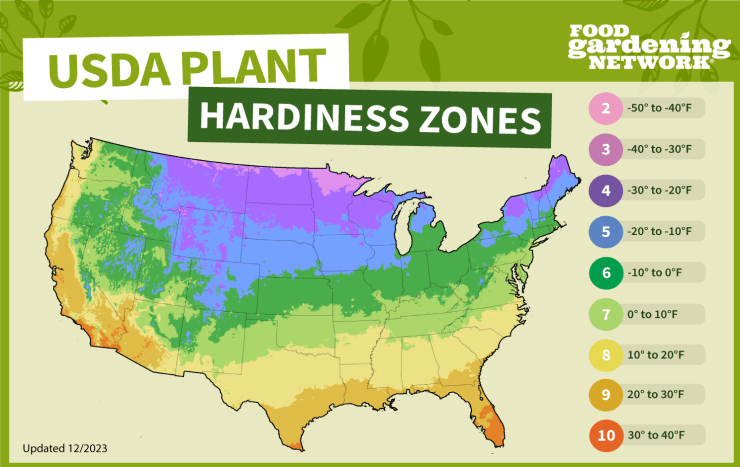Lettuce can thrive in USDA hardiness zones 4 to 9. Here’s a breakdown of the recommended growing zones and some examples of states within those zones:
- Zone 4: This zone covers colder regions with average minimum winter temperatures ranging from -30°F to -20°F. States like Minnesota, North Dakota, and parts of Wisconsin fall into this category
- Zone 5: In this zone, the average minimum winter temperatures range from -20°F to -10°F. States such as Illinois, Iowa, and parts of Michigan are included.
- Zone 6: With average minimum winter temperatures between -10°F and 0°F, this zone encompasses states like Ohio, Pennsylvania, and parts of New York.
- Zone 7: This zone has milder winters, with average minimum temperatures ranging from 0°F to 10°F. States like Virginia, Tennessee, and parts of North Carolina fall within Zone 7.
- Zone 8: In Zone 8, the average minimum winter temperatures range from 10°F to 20°F. States such as Georgia, Alabama, and parts of Florida are part of this zone.
- Zone 9: The warmest lettuce-growing zone, Zone 9 has average minimum winter temperatures between 20°F and 30°F. States like California, Arizona, and parts of Texas are included.
Regarding indoor lettuce cultivation, it’s entirely possible! Here are some tips for growing lettuce indoors:
- Light: Lettuce needs adequate light to grow indoors. Place your containers near a sunny window or use grow lights if natural sunlight is limited.
- Container: Use shallow containers or pots with good drainage. You can grow lettuce in window boxes, pots, or even vertical planters.
- Soil: Use a well-draining potting mix. Lettuce prefers slightly acidic to neutral soil.
- Temperature: Keep the indoor temperature between 60°F and 70°F for optimal growth.
- Watering: Water consistently to keep the soil evenly moist. Avoid overwatering or letting the soil dry out completely.
- Harvest: Harvest the outer leaves as needed, allowing the inner leaves to continue growing.
Check out the USDA Plant Hardiness Zone Map here. Or, for a quick glance at your general plant hardiness zone, use our map.

Remember that some lettuce varieties are better suited for indoor cultivation, especially those that tolerate lower light levels and compact spaces. Enjoy your fresh homegrown lettuce!


 Previous
Previous

